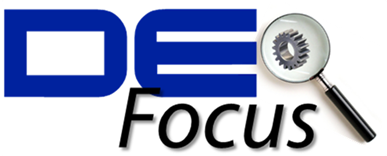

Note: This article uses 3DCS Variation Analyst integrated in CATIA V5 for its demonstrations. These can be performed in 3DCS Variation Analyst Multi-CAD, the stand alone version, as well.
Most times, the use of datum targets is dependent on where and how a component is used. If functional requirements allow using either whole datum features or datum targets, the manufacturing and inspection costs should be considered. See Figure 1(a-b) for an example. When datum targets are used, extra tooling is required to calibrate the datum target positions.

There are certain cases where datum targets are preferred.
(D1) When a datum feature is complex
Datum targets are preferred when a potential datum feature has a complex or irregular shape. An example is shown in Figure 2 [ASME Y14.5-2009, P90]. In this case, datum targets avoid uncertainty during manufacturing, assembly, and inspection.

(D2) When a datum feature is uneven
A typical scenario is that some manufacturing processes, such as casting, forging, or welding, could produce uneven features, as shown in Figure 3 [Paul Drake, ‘Dimensioning and Tolerancing Handbook, 1999, 5-90]. In this case, using datum targets can improve the datum repeatability.

(D3) When it is impractical to use the entire feature as a datum feature
An example is an automotive hood shown in Figure 4. The hood has an influential surface that is non-planar. To establish datums for the hood, datum targets are the easiest and least expensive solution. Multiple targets, at least four, are needed since the hood part is deformable.

(D4) When only a portion of a feature is used as a datum feature
Sometimes using an entire feature as a datum is not necessary because of the functional requirement, see Figure 5 for an example [ASME Y14.5-2009, P88]. In this case, it is better to use datum targets to specify the functional portion of the feature.

(D5) When stepped surfaces are used as a datum feature
Datum targets are preferred when establishing a datum from stepped surfaces. An example is shown in Figure 6.

There are three types of datum targets [ASME Y14.5-2009, P38]: Datum Target Points (Figure 7a), Datum Target Lines (Figure 7b), and Datum Areas (Figure 7c).

All datum targets should be marked with one of these symbols: Datum Target Point, Square Datum Target Area, Circular Datum Target Area, and Rectangle Datum Target Area.
Originally published March, 2013, in the DCS Monthly Newsletter
Editors:
Ying Qing Zhou
Earl Morgan
Victor Monteverde
No Comments Yet
Let us know what you think